Adding to Fenton's Miscategorization Illusion, Part 1
Shattering the Efficacy Illusion, Part 8
Articles from the Vaccine Wars can be found here.
Ladies and gentlemen, this is one of those articles you're going to want to read and pass around. Then you're going to want to give me some of your money, then line up and do it again. Please remain seated for the duration of the show.
I should have tackled a rebuild of Norman Fenton's simulation of vaccine effectiveness (VE) assuming a saline solution and miscategorization of vaccination status long before now. Unfortunately, I've been distracted by an array of attention-sucking attacks. Most often, when I see work by great people, I don't bother repeating it. In this case, I did so because the argument is one of the two most important arguments in the book that I'm working on. I'm really kicking myself, now, because the entire project and this writeup only took four hours, total.
Before I get on to what I found while replicating Fenton's work, some readers may want to check out Fenton's simulation, here, including this video:
For spreadsheet jocks and serious data minds, Fenton's argument is relatively simple. However, he is working with enough columns that I worry that those (even data trained) individuals held up with cognitive dissonance will simply "turn the page" without working out the details. So, I set out thinking about how I might display the argument more simply in book form. Not only do I believe that I've found a way, but after replicating Fenton's work, I realized a way to engineer the full claimed VE of the experimental quasi-vaccines!
For the simplicity of a printed book, I decided to see how few columns I could work with to make Fenton's point. I also decided to use color differently, and it will soon be apparent why.
I'm using the same exact numbers Fenton uses:
The 2% infection rate is irrelevant to the final calculations, as Fenton explains.
The 1,000,000 population total (vaxxed + unvaxxed each week) does not change the proportions in those calculations either, but it's a nice, round number.
I used Fenton's weekly vaccination rate curve (the proportion of the unvaccinated from the prior week that became vaccinated on any given week). I'll come back to this because alteration of that column becomes important!
Otherwise, I have the vaccinated population in green, and the unvaccinated in some pinkish skin pigment color because I didn't want to fiddle long enough to make it light red. If you like, you can check to see that 2% of the "People" in each group, each week, becomes "Infected".
Now, here is the setup for the sleight-of-hand magicky business: We break the Vaxxed group into two subcategories:
The RTvaxxed are those "Recently Treated" of the Vaxxed population, meaning in the past two weeks.
The Tvaxxed are those among the Vaxxed population "Treated" prior to two weeks ago. Feel free to think of them as like "Totally vaxxed, bro".
Now, step into the shoes of a sociopathic vaccine salesman. You want your product to look good, so you look for a reason to slough some infecteds off from the Vaxxed population into the Unvaxxed cohort. Since it takes a little while for antibodies to build up (since people know these have something to do with immunity something something), you identify those infecteds in the RTvaxxed population, and miscategorize them as "Unvaxxed".
Only now do you calculate VE. This involves calculating the infection rates for the Vaxxed and Unvaxxed cohorts. This is where the illusion takes place.
The RTvaxxed Infected population has been shifted from the numerator of the Vaxxed infection rate to the Unvaxxed infection rate, while the number of RTvaxxed has been kept in the denominator of the Vaxxed infection rate.
Let's demonstrate this illusion one time, for Week 3:
Now, instead of computing Zero VE as we should for a saline solution, we compute a fudged VE that allows for the military-pharma complex to pretend that transfection of cells with a foreign protein somehow resulted in fewer people becoming infected.
Wowzers and holy moly! We didn't even have to define what the population was being infected by, but the saline solution sure did protect people from it. People are going to be lining up for miles for these saline solutions. Heck, let's sell them as "protection from infection by mortality" generally, or maybe "protection from infection by [the other political party]." Maybe we should have specific saline solution brands to protect people from either Trump or Biden. Or both. I can feel my bank account swelling, already.
Remember kiddos, chicks dig billionaires. Do whatever it takes. Hate the game, not the player. YOLO and whatnot.
Okay, now that my visions of a personal gold rush are over, let's expand the chart just a little to show that we have exactly the VE computations that Fenton & Friends came up with:
Much efficacy! So waning…
Now, you might have noticed that our illusion only ratched VE up to 86.3%. I thought at first that Healthy User Bias (HUB) might further push VE up to the touted 95%. But as I played with the variables in the spreadsheet, I found some additional magic. One second, let me pull out my bag of faerie powdered mushroom dust and sprinkle it around the Weekly Vaxx Rate…a little here…a little there…
Behold! a miracle! With a few strokes of a keyboard, and a little pill concocted by a funny actor, we engineered 95% efficacy out of a saline solution!
I plan to add to this article soon, and then incorporate it all into a book, along with all the best facts, arguments, and analysis that I've collected for over two years that demonstrate The Efficacy Illusion.
Ladies and gentlemen, I am so gratified that you enjoyed the show. Please remember to tell all your friends about our stupendous new experimental genetic therapy vaccine, and come back often.


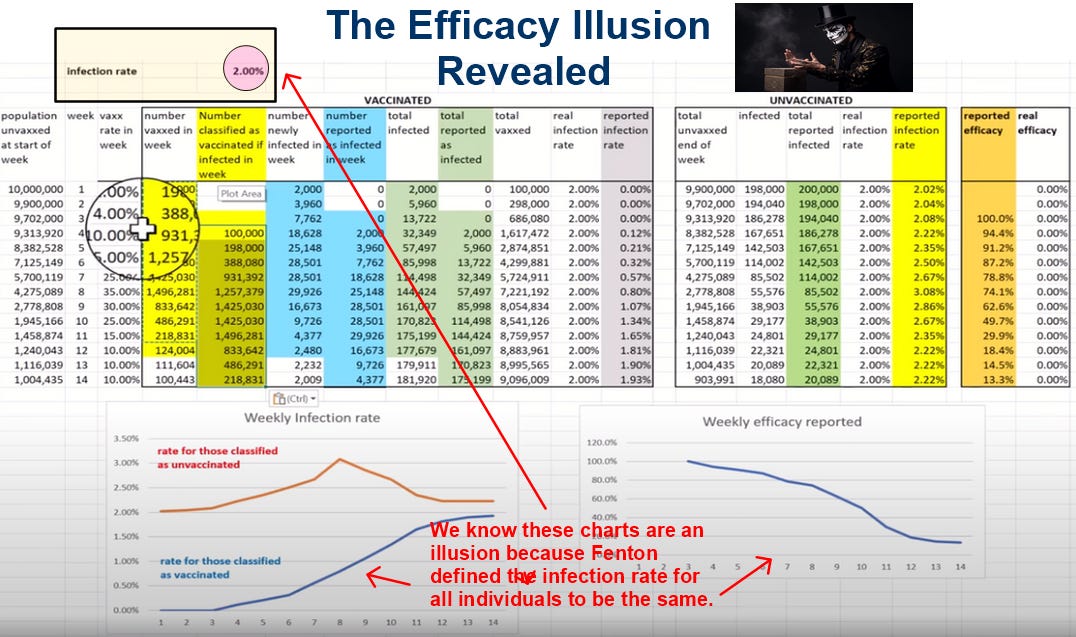

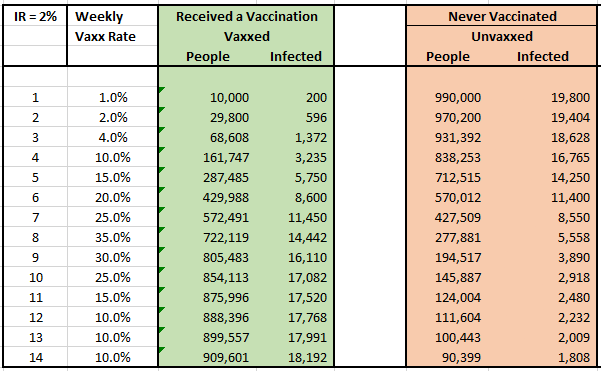
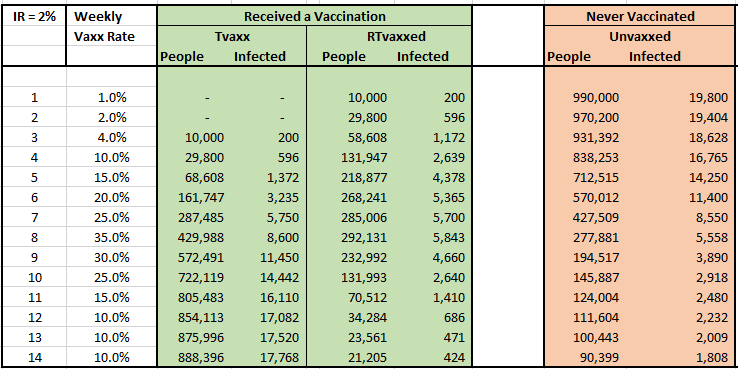
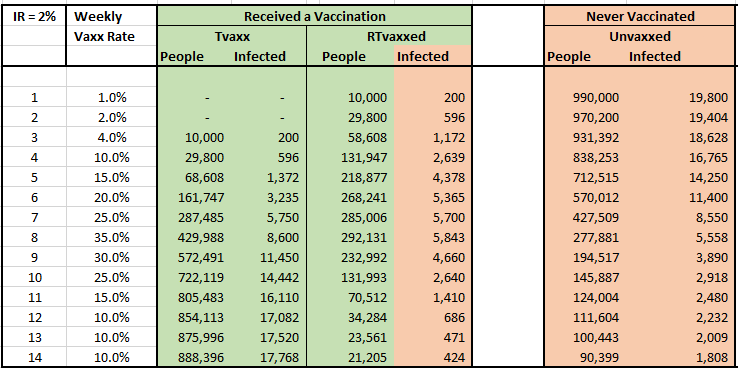

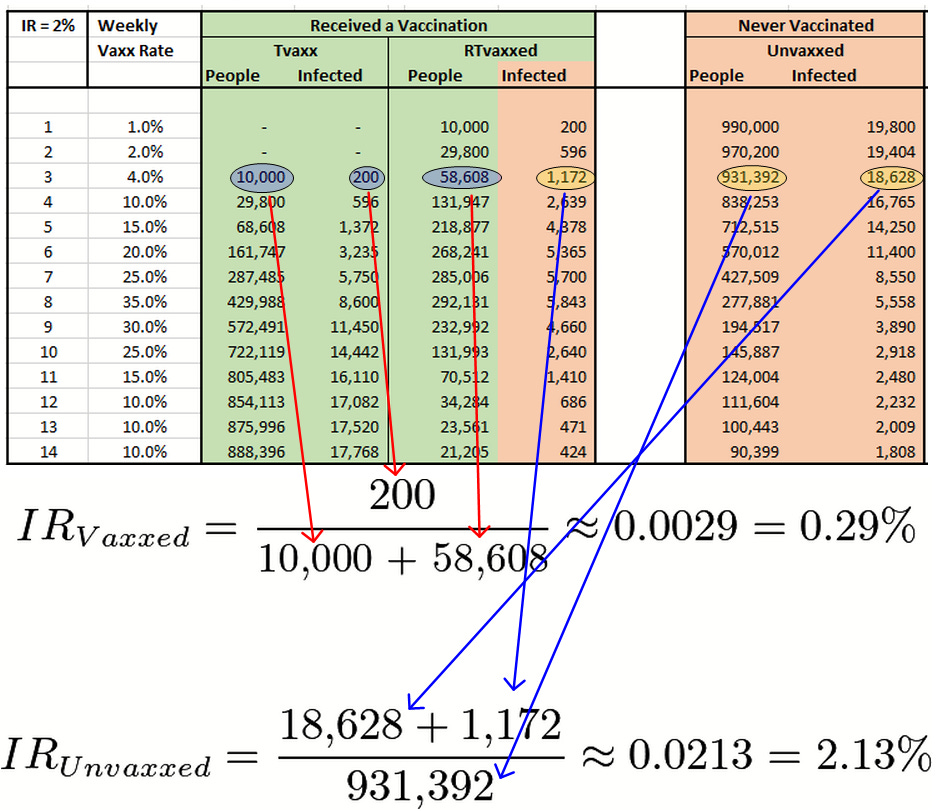

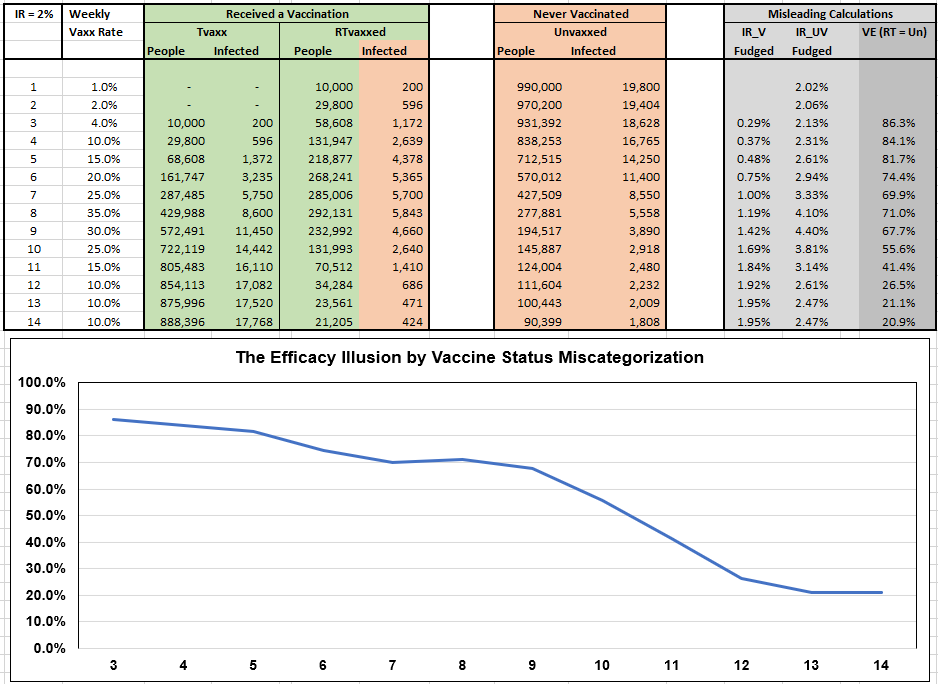
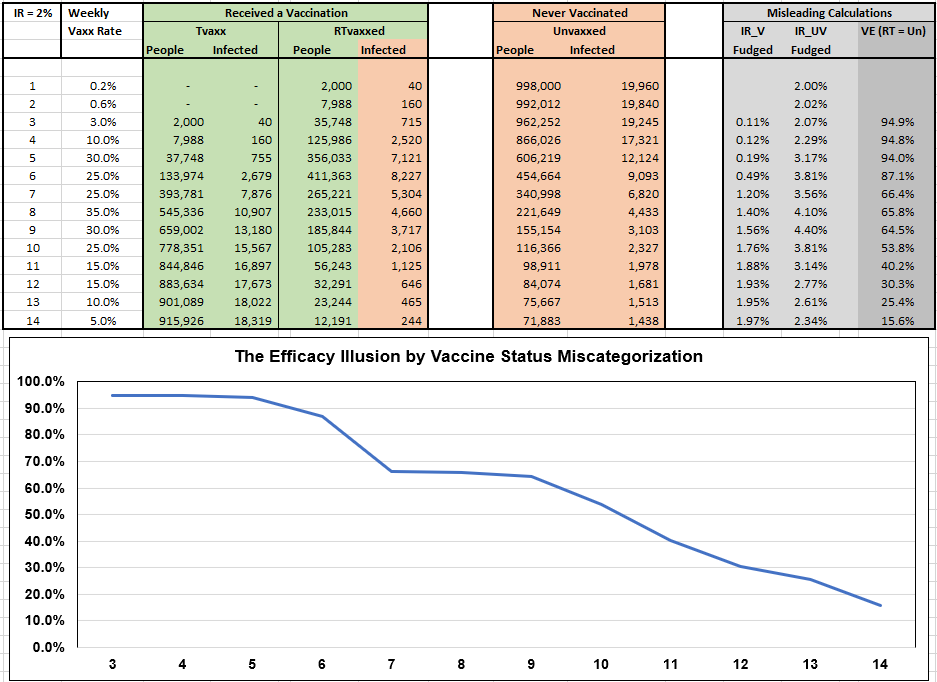
A while back I tried to figure out some possible sources of error in VE by taking an algebraic approach. You commented on the article back then.
https://rudolphrigger.substack.com/p/a-fascinating-result
I take this approach because I'm not all that great with stats and data - I can "see" things much clearer with algebra.
My approach wasn't really demonstrating anything new - but trying to see the same things others had commented on but in a different (and simple) way.
Anyhoo - the point of the piece was really to highlight an effect that I'd noted : within my simple vaccination schedule model the end result for VE depended on the *percentage* vaxxed if the VE was calculated with a delay that effectively shunted the recently vaccinated deaths into the unvaxxed category.
You altered the percentage vaxxed here and found you could manipulate the efficacy. In other words you're seeing a dependence of the VE on the percentage vaxxed.
The efficacy of a vaccine should, of course, not depend on whether 10% or 20% or 80% of the population have been vaccinated. My question would be whether being able to demonstrate a dependence on vax percentage is sufficient to show "datacrime" with regards to VE?
Does your book additionally also cover the - I think other, different from this - sleight of hand that Gato Malo called the "Bayesian Data crime"?
https://boriquagato.substack.com/p/bayesian-datacrime-defining-vaccine
Probably that is already covered in earlier parts of your article series.